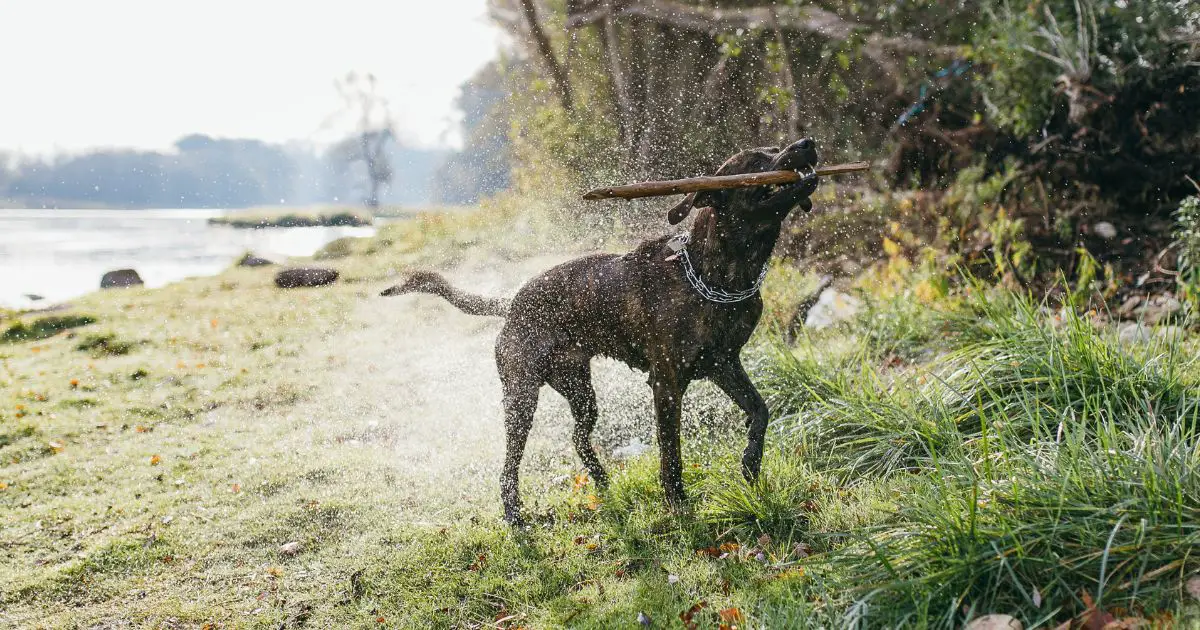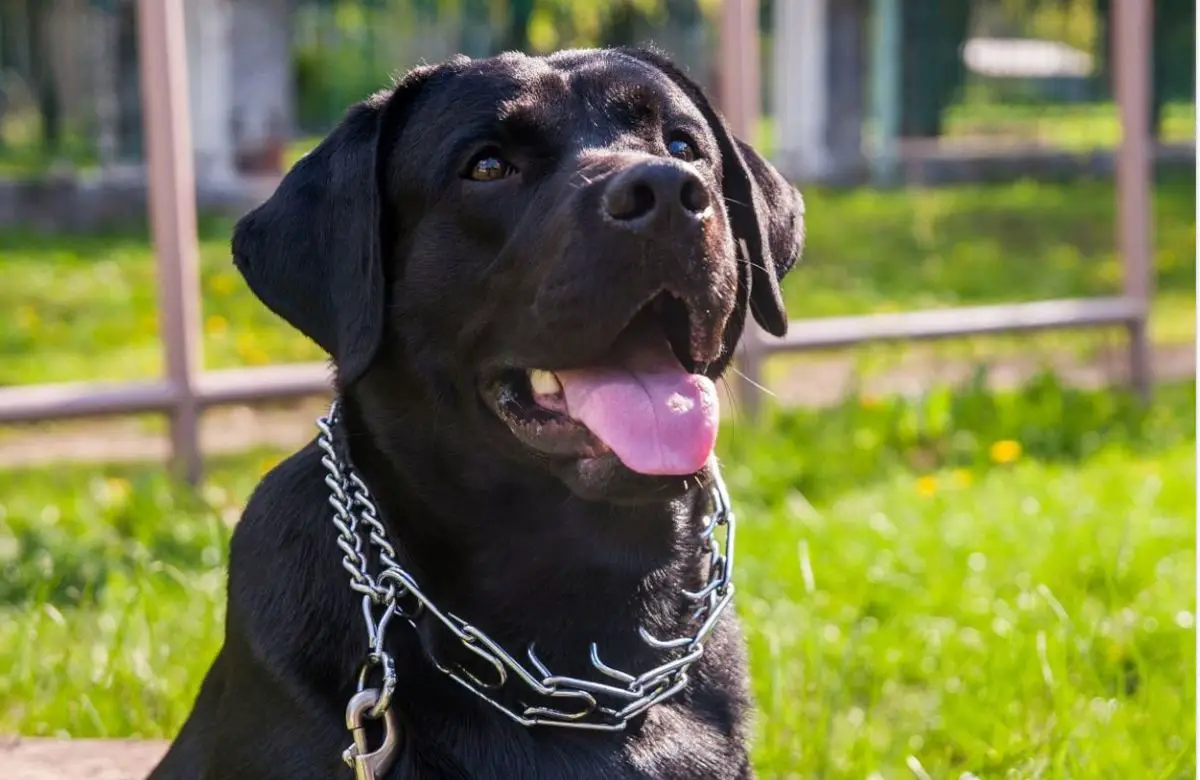You have got a Prong Collar to train your dog but don’t know how to use it? Well, you’re not the only one stuck in this situation. In most cases, new dog parents and beginner dog trainers don’t know how to use it either.
However, it is a must to know how should you place a prong collar on a dog appropriately if you want to train your dog with it. Inappropriate or faulty use can result in a hazardous situation for you and your dog.
But there is nothing to worry about. By the end of this write-up, you’ll get everything to know about Prong Collars for dogs and how to use it correctly. So, stick around to the end, and get the best out of it.

What Is A Prong Collar?
Before getting into the use, firstly let’s get a clear idea about what a Prong Collar actually is.
Looking at a Prong Collar for the first time, anyone might get scared with its looks. At first sight, the Prong Collar may look like a torture tool because of its appearance.
The prong links with a teeth looking edge can make you think, if you put this on your dog, he would definitely get hurt. But don’t get confused with its deceiving look.
Think carefully; why would it be in a legal dog’s training tool list if it is that much hurtful?
In reality, Prong Collars don’t hurt your dog at all unless any unwanted accident takes place. It is a dog training collar different from your dog’s regular choke collar.
A choke collar is there to be on your dog’s neck and walk your dog around. But, a Prong Collar is used to train your dog with behavioral issues.
Prong Collars work great in the beginning days of dog training. It is easier to train younger dogs with a Prong Collar and help them develop correct behavior.
Unlike other collars you don’t pull a Prong Collar tightly and drag your dog. Rather, you put it on your dog, connect a leash. When you see your dog is excited to see something and pull towards it, you simply perform a tug on the collar with a short pull on the leash.
This activity represents a canine teeth bite on the dog’s neck. You may be wondering, how does that correct my fur buddy’s behavior?
Well, when a pup is just growing it’s mother guides it to be and behave the right way. When a pup behaves wrong the mother dog grabs it by its neck with her teeth. It makes the puppy understand that he can’t do what he is doing.
A pressure created by a Prong Collar mimics the same thing on the dog’s neck. Then the dog understands the correction right away. The Prong Collar distributes the pressure evenly around the dog’s neck so that no specific part of the throat gets hurt.
How To Choose The Right Prong Collar?
Now that you know what a Prong Collar is, at this point, learn how to choose the right Prong Collar for your pup.
Well, there are a variety of Prong Collars available in the market. But, experts and almost all the pup owners and trainers rely on the brand, “Herm Sprenger”. They have varieties of Prong Collars for different types of Dogs.
Generally, they offer chrome, stainless steel, Kurgan and Neck Tech (Micro Prong Collar) style Prong Collar. They also have both buckle and without buckle Prong Collars.
To get the right fit for your dog you need to get the exact sized one. Normally, a 45 pounds dog or more than that will need a 2.25mm Prong Collar. You must measure your dog’s weight to get the best Prong Collar.
Measuring the neck area would also help you to find the right fit Prong Collar for your best buddy.

How To Use A Prong Collar – Correct Steps To Follow
In order to train your dog properly, you must fit the Prong Collar right on his neck. Follow the steps below to do it in the perfect way.
-
Step 1
Keep your dog in a stable position and take the Prong Collar in your hands. If it has a buckle system, unlock the buckle to open the ends of the collar.
If it’s the one without a buckle, pinch a Prong to disconnect the links and get two ends.
-
Step 2
Now, wrap the collar around the dog’s neck. You have to put the collar fit snugly under his jawline and just behind the ears around his neck. Putting the collar lower than that will result in no good training.
Besides, it can create some space for unwanted accidents to occur.
-
Step 3
After putting on the Prong Collar at the right spot, close the ends. On the buckle collar, it’s simple. Just close the buckle. If it’s the other one, connect the links by pinching the Prong.
You can also remove or increase Prongs if needed.
FAQs-
-
Can I leave a prong collar on all day?
No. You can’t leave a Prong Collar on all day on your dog. It’s a sensitive canine training tool, not a regular choke collar for him.
If you do so, your dog may put himself in circumstances that can cause serious injury.
-
Do prong collars make dogs aggressive?
Dogs are only aggressive when not trained right. If you train your dog with the right manners using a Prong Collar, it won’t make him aggressive at all. Rather, you would get brilliant results in his behavior.
If you use the tool wrong, the results indeed won’t be on your side.
-
When should I start using a prong collar?
There is no specific strict rule for an eligible age for your pup to be on a Prong Collar. It is more about when you’re feeling the necessity to train your dog with a Prong Collar.
If your dog is big but doesn’t pull towards wherever he shouldn’t, you don’t need to get familiar with a Prong Collar.
But, if your puppy is small, like 3 to 4 month but has already developed an aggressive pulling behavior, the young lady needs to be taken care of under Prong Collar training.
Conclusion
Talking about Prong Collar, now we’ve reached the end. Hope that you got the best idea on how to use a Prong Collar correctly.
Make sure you understand everything about Prong Collars yourself first, and then move on to train the young fur ball you got. Happy training!

